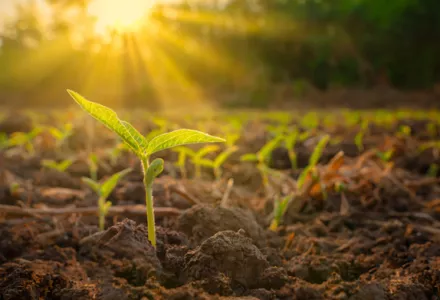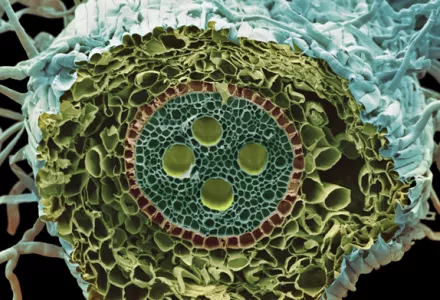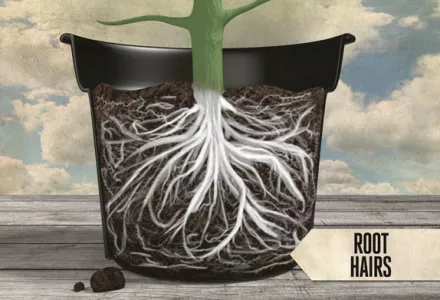Roots are one of the most important parts of the plant for taking up nutrients and water. For some growers, they are so important that they always check the root system before watering.
The foundation
Plants need roots in order to stay upright and not to be blown over by the wind. Water and nutrients also enter the plant through the root system.
The root system will continue to increase in volume for as long as the plant as a whole, including the foliage, continues to grow. When a certain equilibrium has been reached, the plant will simply maintain its volume, and cease to grow. Even in this state of equilibrium, the roots continue to grow, but will die back partly as well. To understand this better, we will have to divide the root system into parts.
The root system
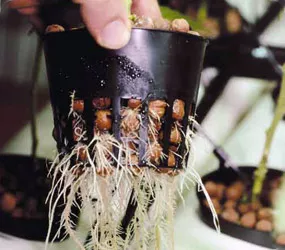
As mentioned, the root system will only increase in volume for as long as the rest of the plant continues to grow. However, transpiration from the leaves can also cause more roots to form in order to pump up the water needed. In the end, an equilibrium is established between the roots and the plant.
A general rule of thumb is that the root system should comprise 30% of the total plant volume. Although this rule applies fairly consistently to plants in the open air, in substrate culture this does not always have to be the case. You can grow large plants in small pots as long as you supply them with water and nutrients and do not allow the pot to get too dry or too wet. To reduce the chance of this happening, we advise a large medium volume.
In hydro cultures you will also see that fewer roots are needed in order to grow a larger plant. This is because each root hair is able to absorb more water and nutrients. This is one of the reasons that hydro culture has the potential to produce higher yields.
Root hairs
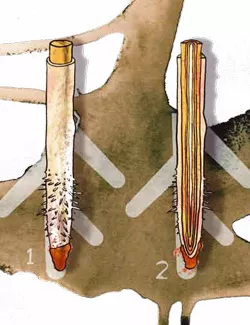
The root hairs are where most of the nutrients and water are absorbed. The root tip produces new cells on a daily basis, and thus also root hairs. When the plant is short of water and/or nutrients, it will devote more assimilates (photosynthesis energy) to producing more cells in the root tip. This also generates more root hairs until the root has found what the plant needs (more water or nutrients). The oldest root hairs will then die off.
In practice, as the medium gets drier, the root starts looking for water and will produce more cells, and thus more root hairs. Absorption capacity increases, because more root hairs are produced. But the youngest root hairs will enter even more “moist” soil. The plant can still take up water and sometimes even more! This is why the general advice is to grow on the dry side: when you water, some of the root hairs become redundant. To limit the energy-loss (dissimilation energy), the oldest root hairs will die off.
If you give the plant too much water, all the root hairs will die off. Effectively, the roots drown and it takes at least three days before a root tip has produced enough new cells with root hairs. The dying off of root hairs also happens after repotting the plants or after moving them very roughly. So when this is the case, go gently on your climate control the first 3 days.
And pay good attention to the watering: don’t overdo it but on the other hand, don’t let the plant dry out too much.
The root
Unlike the root hairs, the roots themselves are visible to humans. The root cells, without root hairs this time, will stretch to enable the propulsion of the youngest part of the root forwards. The outermost cells of the root suberise (form a hard surface, like the bark of a tree), after which they only serve as a pipeline to transport the water and nutrients absorbed towards the stem and the rest of the plant.
Plants in the vegetative phase will increase in weight, both above and below the ground. Even in the first stage of the generative phase, the leaf surface area will increase and an active climate will cause the roots to increase in volume. Eventually, an equilibrium will be reached. This maximum equilibrium usually comes when around 50% to 70% of the flowering period has elapsed (for example, week 6 of a 10-week growing cycle).
In potting mix cultures, the plant can absorb 5 to 6 litres of water/m2 per day. But in hydro cultures more water can be absorbed with fewer root tips (but not fewer root-hairs!).
Root tips
At the end of every root is the root tip. The root tip consists of a root cap and a growing point. The root cap is very hard and protects the growing point. It is so hard, in fact, that it can break and grow through asphalt if the cap has enough energy.
In the growing point behind the cap, new cells are created. The most important plant hormones are also produced here. These will not be discussed in this article. For more information on plant hormones, please see CANNAtalk 9. It is these new cells that cause the roots to grow further through the medium. The roots are able to do this not only because new cells are created, but also because the existing cells are stretched. The first cells also contain bulges, called root hairs.

